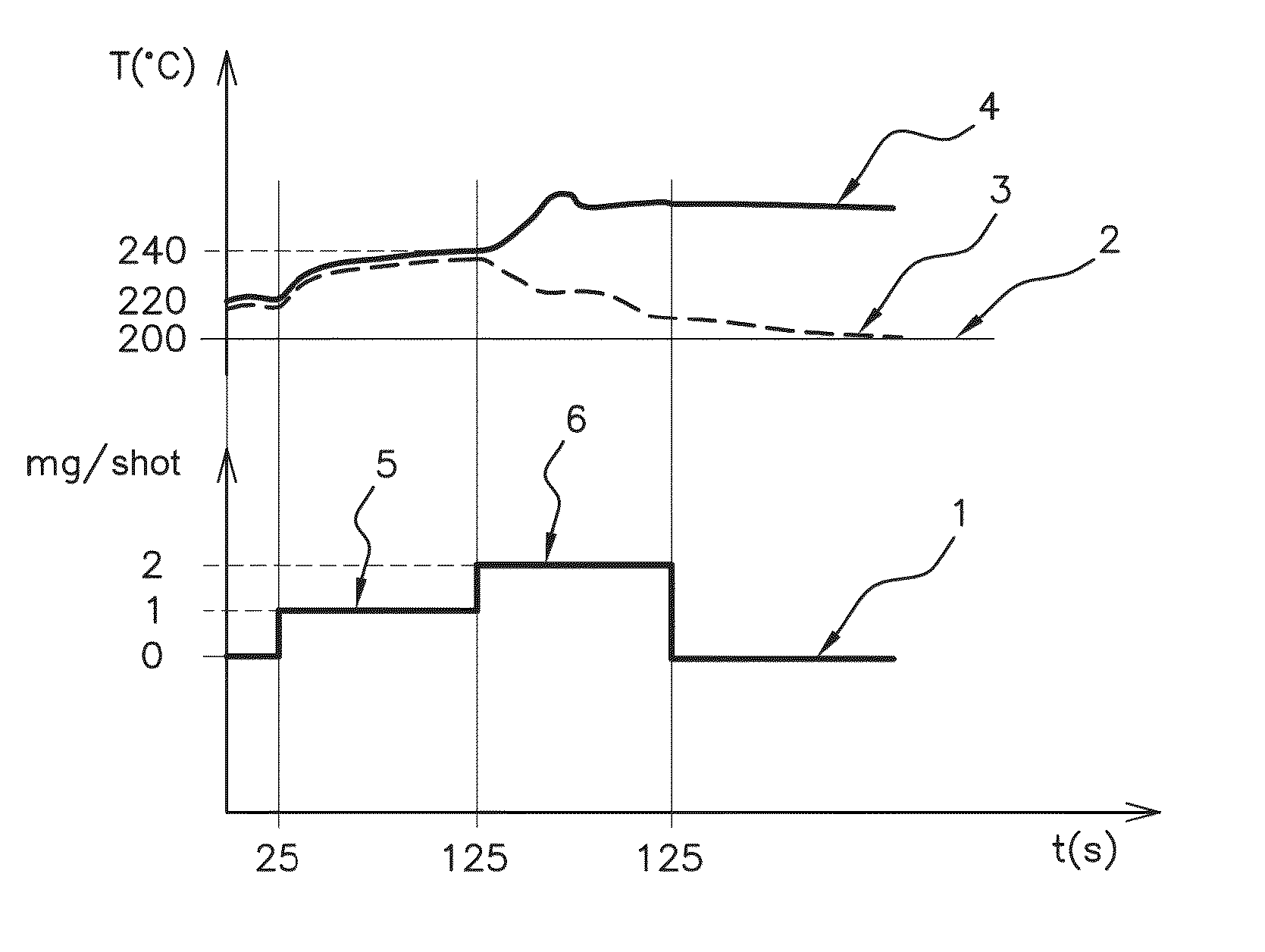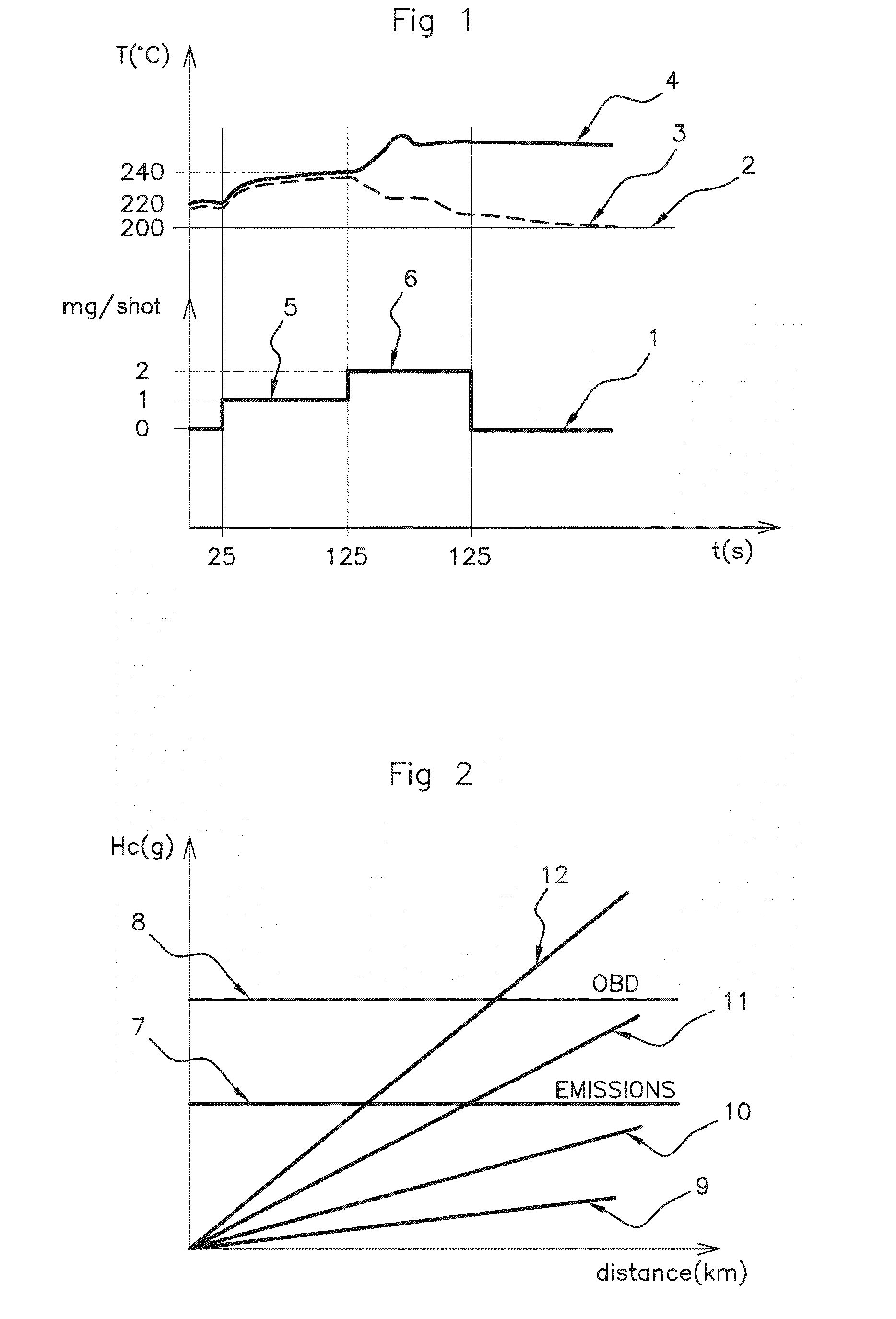Method for monitoring an oxidation catalysis device
a technology of oxidation catalysis and monitoring device, which is applied in the direction of electrical control, exhaust treatment electric control, separation process, etc., can solve the problems of spreading of temperature estimates themselves, and achieve the effect of increasing the flow rate of exhaust gas, relatively small margin of error, and easy comparison with a view to diagnosing
- Summary
- Abstract
- Description
- Claims
- Application Information
AI Technical Summary
Benefits of technology
Problems solved by technology
Method used
Image
Examples
Embodiment Construction
[0042]The method illustrated in FIG. 1 is a method for monitoring according to the invention, applied to an oxidation catalysis device of known type arranged also in the known way in an exhaust line of an internal combustion engine of a vehicle, for example a turbocharged diesel engine comprising, from upstream to downstream starting from the engine: the turbine of the turbocharger, the oxidation catalysis device or DOC, a particulate filter or DPF (diesel particulate filter) and a selective catalytic reduction or SCR device, or with the order of the last two swapped over. In the absence of a turbo, the oxidation catalysis device or DOC is advantageously positioned directly downstream of the engine.
[0043]FIG. 1 shows how parameters indicative of the method of monitoring according to the invention evolve. The abscissa axis represents the time t in seconds, and the ordinate axis represents three scales of parameters, namely the inlet temperature of the oxidation catalysis device or DO...
PUM
 Login to View More
Login to View More Abstract
Description
Claims
Application Information
 Login to View More
Login to View More - R&D
- Intellectual Property
- Life Sciences
- Materials
- Tech Scout
- Unparalleled Data Quality
- Higher Quality Content
- 60% Fewer Hallucinations
Browse by: Latest US Patents, China's latest patents, Technical Efficacy Thesaurus, Application Domain, Technology Topic, Popular Technical Reports.
© 2025 PatSnap. All rights reserved.Legal|Privacy policy|Modern Slavery Act Transparency Statement|Sitemap|About US| Contact US: help@patsnap.com


